Wine Enthusiast: From mail-order business to acclaimed media powerhouse

The Media Leader Interview
In an exclusive interview, Jacki Strum, President and Publisher at Wine Enthusiast, uncorks the fascinating story of the premier destination of all things wine. We journey from their humble beginnings as a mail-order wine accessory business in a New York attic, all the way to their current status as a multi-faceted media powerhouse.
Strum spills the tea on the company’s secret sauce – its business model and strategy. We’ll also get a sneak peek at their recently relaunched website and exciting upcoming projects. Plus, buckle up for a deep dive into the latest wine trends – have you heard of the curious case of Orange Wine?
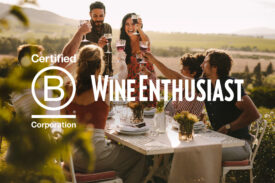
“This growth fueled the success of both our business -commerce and media- which are intrinsically linked to the wine industry’s health”
The Media Leader: Can you tell us about the company’s journey, from its inception to where it stands today?
Jacki Strum: The business started in the late 70s. My dad was selling wine door-to-door in New York and my mom was a TV commercial producer. They saw a niche – People loved wine, but lacked the tools to fully enjoy it at home. This sparked a game-changing idea: a mail-order catalog offering fine wine accessories, the first of its kind. Success was immediate. They ditched their old job, bought inventory, and set up an office in Northern Westchester.
Fast forward nearly a decade, their business boasted a loyal customer base and industry connections. They decided to write about wine as a natural extension of their commerce business. In 1988, Wine Enthusiast magazine was born. Scores and editorial formed the magazine’s foundation.
Then came 1990. A 60 Minutes report on the “French paradox” – the supposed health benefits of wine – sent shockwaves. Back then, media wasn’t fragmented. Everyone watched the same shows, and a single “60 Minutes” segment could reshape an industry. And that’s what happened. Wine boomed, and it hasn’t stopped growing (It has plateaued a bit lately but it has not truly lost popularity since that day). This growth fueled the success of both our business -commerce and media- which are intrinsically linked to the wine industry’s health.
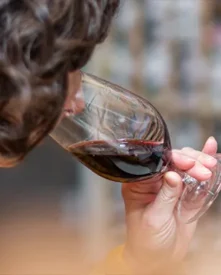
“We have a very strong print business, which I know is not as common as it used to be”
The Media Leader: Following up on that rich history, can you tell us what your business model is and how it is different from most consumer magazine publishers?
Jacki Strum: For the media division, we have all the typical channels of a media business.
However, we have a very strong print business, which I know is not as common as it used to be. So, we have the original powerhouse – our print magazine – still thriving in a digital age. We also have our website, which went through a massive relaunch last summer. We’re social media savvy, with a strong presence on Instagram, Facebook and X. TikTok is a new strategy for us.
Our podcasts are very popular. Vinfamous, a wine and crime limited series, won a bunch of awards. Plus, we have our email database which has over 1,000,000 subscribers, the largest database in the United States of certified wine consumers I believe. This lets us connect with them directly through targeted emails. We also offer a more intimate connection via SMS, with over 70,000 opting in for personalized updates.
Then we have our catalog, which falls under a separate division but it shares our brands and offers another touchpoint for wine lovers. They can subscribe or advertise.
“This launched last year and has yielded significant results: a 20% traffic increase and a larger email subscriber base”
The Media Leader: You mentioned the recent relaunch of your website. Can you highlight the key changes and how this impacted both your commerce and content platforms?
Jacki Strum: For years, we realized a missed opportunity. Our commerce and media arms operated separately, even though their audiences were highly likely to overlap. Wine Enthusiast readers were passionate about wine, potentially interested in buying wine accessories. catalog shoppers likely enjoyed wine and might benefit from the media content.
Data confirmed this – we did a big study and found out that there was minimal crossover. People either knew us for the catalog or for the magazine, and only people who were like super users or clients or worked with us, really understood that we were both. That’s a huge miss. This launched last year and has yielded significant results: a 20% traffic increase and a larger email subscriber base. Advertisers can now craft more targeted campaigns, reaching customers closer to purchase decisions. We can also expand our reach by capturing email addresses from wine enthusiast reading our content.
This unified approach is a win-win. Consumers benefit from a more holistic wine experience, and we can better serve both our audience and our advertising partners. We feel really thrilled that we were able to launch it successfully and see some growth almost immediately.
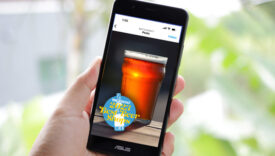
“This highlights a lasting consumer preference for screen-free media consumption for our content, which is why print remains relevant”
The Media Leader: That brings us to the print vs. digital debate. What do you believe print offers that digital can’t? Do you see print continuing to be a valuable part of your strategy?
Jacki Strum: We occupy a unique niche. We are not hard news. We are not even soft news.
We are a luxury hobby. This translates to a continued preference for print. I actually just heard a statistic this morning that’s relevant to our conversation. Last year, more printed books were sold than movie tickets, that’s not even including audio books. There is an undeniable human desire for the tactile experience of reading. This was evident during COVID, when our subscription rates soared. The constant digital stimulation led people to crave a break. While the growth has slowed since, subscriptions continue to rise steadily. This highlights a lasting consumer preference for screen-free media consumption for our content, which is why print remains relevant. It’s a vital part of the Wine Enthusiast experience.
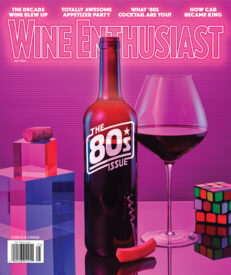
“Think of our target audience as ‘elderly millennials’ – comfortable with digital tools but still appreciating the depth offered by print”
The Media Leader: Who is the typical Wine Enthusiast reader? What kind of person is drawn to your content?
Jacki Strum: Our audience online is remarkably broad. We cater to both the seasoned wine expert to the curious newcomer. Our print subscribers, with a median age of 41 (the youngest in the industry!), are our resident experts. They delve into in-depth topics like current yeast trends. Our website actually addresses a wider range of inquiries.
We leverage our authority in the wine world to become a trusted resource. Our website tackles everything from basic questions (like the most popular 2023 article on “how to hold a glass”), to complex industry discussions. We view search engines like Google as a way to address unspoken questions that make make people feel unsure. We understand the hesitation that comes with fearing judgment for pronunciation or etiquette. Nobody wants to say the wrong thing. Pronounce it the wrong way. By creating content that answers these common searches, we empower users to feel confident in their wine exploration.
We don’t shy away from beginner-friendly topics: How do you pronounce Pinot Noir? What is the difference between red and white wines? We take these inquiries. It’s a big part of our traffic strategy. We also have a place for the experts: Who are the up and coming winemakers in Sicily today? What are the interesting ways people are using to power their wineries? This approach ensures we attract both the curious novice and the established expert. Think of our target audience as ‘elder millennials’ – comfortable with digital tools but still appreciating the depth offered by print.

“Our readers reflects major metropolitan areas, unsurprisingly”
The Media Leader: How about geographically? Where do your readers come from?
Jacki Strum: Our readers reflects major metropolitan areas, unsurprisingly. California , New York, Miami, Chicago and Texas are all key markets, hubs for wine consumptions. Interestingly, regional preferences emerge within these areas. For example, New York leans towards imported wines – French, Italian, Spanish – while California celebrates its homegrown vintages.
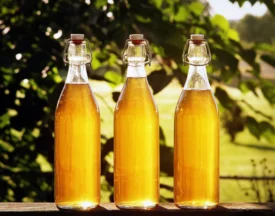
“Orange wine is finding its way onto menus everywhere! While its dryness and tannic structure might seem counterintuitive to American palates, it’s gaining traction, much like the unexpected popularity of Kombucha”
The Media Leader: What is trending in the industry this summer?
Jacki Strum: Tequila and sparkling wine continue to reign supreme in the spirits world, showing no signs of slowing down from last year’s boom.
Beyond those superstars, two interesting developments are emerging. First, there is a surge in high-end white wine. Consumers are indulging in more expensive white wines, a trend we can support through content and recommendations.
The second, and perhaps most surprising, is the rise of orange wine. Orange wine is so old it’s new again! This ancient winemaking technique, characterized by its skin-contact fermentation and unique flavor profile, is experiencing a resurgence. Once a niche product favored by sommeliers, orange wine is finding its way onto menus everywhere, not just in Brooklyn! While its dryness and tannic structure might seem counterintuitive to American palates, it’s gaining traction, much like the unexpected popularity of Kombucha.
One concerning trend that I am seeing lies in the overall decline of wine consumption. While consumers are opting for higher-quality wines, the total volume purchased is decreasing. This shift presents a challenge for the industry. For us personally, I am not sure of the impact yet. People don’t like reading reviews about $6 boxed wine, but they will read reviews for their $30 white burgundy. So, I don’t think this is bad for us yet, but it is a scary trend. This is something we are monitoring.
“A key challenge in the wine industry is the misconception that all wine is inherently unhealthy”
The Media Leader: What are some of the biggest obstacles Wine Enthusiast is currently facing, and how are you navigating them?
Jacki Strum: A key challenge in the wine industry is the misconception that all wine is inherently unhealthy. Numerous studies support the potential benefits of moderate wine consumption. However, responsible enjoyment is crucial.
Just like any food or beverage, moderation is key. Excessive alcohol consumption can have negative health consequences. The concept is similar to enjoying delicious food like bacon – it can be part of a balanced lifestyle, but not the entire focus. Life is about pleasure. You should not be depriving yourself. Wine Enthusiast is committed to promoting responsible wine enjoyment and highlighting the ongoing research on wine’s potential health benefit.
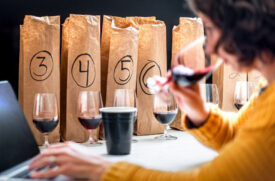
“We have two big launches this year that I’m really excited about”
The Media Leader: What’s next for you guys?
Jacki Strum: We have two big launches this year that I’m really excited about. The first one (launched last week) is the Wine Enthusiast Tasting Room Directory, your one-stop shop for planning wine country adventures. I’ve always wanted to do this. Similar to restaurant finders, this platform provides curated recommendations and filters to help you design your dream winery tour. We’ve partnered with Tock, an all-in-one solution for reservations and table management (the directory houses thousands of tasting room listings from around the world), and select wineries to offer rich content, including photos, reviews, scores, and the ability to purchase wines directly.
The second launch is the Wine Enthusiast Ratings platform. We understand our scores are highly valued by retailers, making our blind process crucial (it’s a core part of our unbiased evaluations, even though it requires more resources). Due to a surge in submissions, we had to pause reviewing wines from certain regions. We score 25,000 wines a year and we do it all blind. The blind aspect is really important. Not everybody does it that way and it costs us more infrastructure, more timing, more money. The Wine Enthusiast Ratings platform will streamline this process. Wineries can submit wines, track the status, and receive updates – all on a user-friendly platform. This launch, scheduled for early September, will be a game-changer. It will allow us to resume scoring a wider range of wines while maintaining our rigorous blind tasting standards. There will be a small processing fee, but the true value lies in the platforms efficiency and the increased accessibility for wineries.




